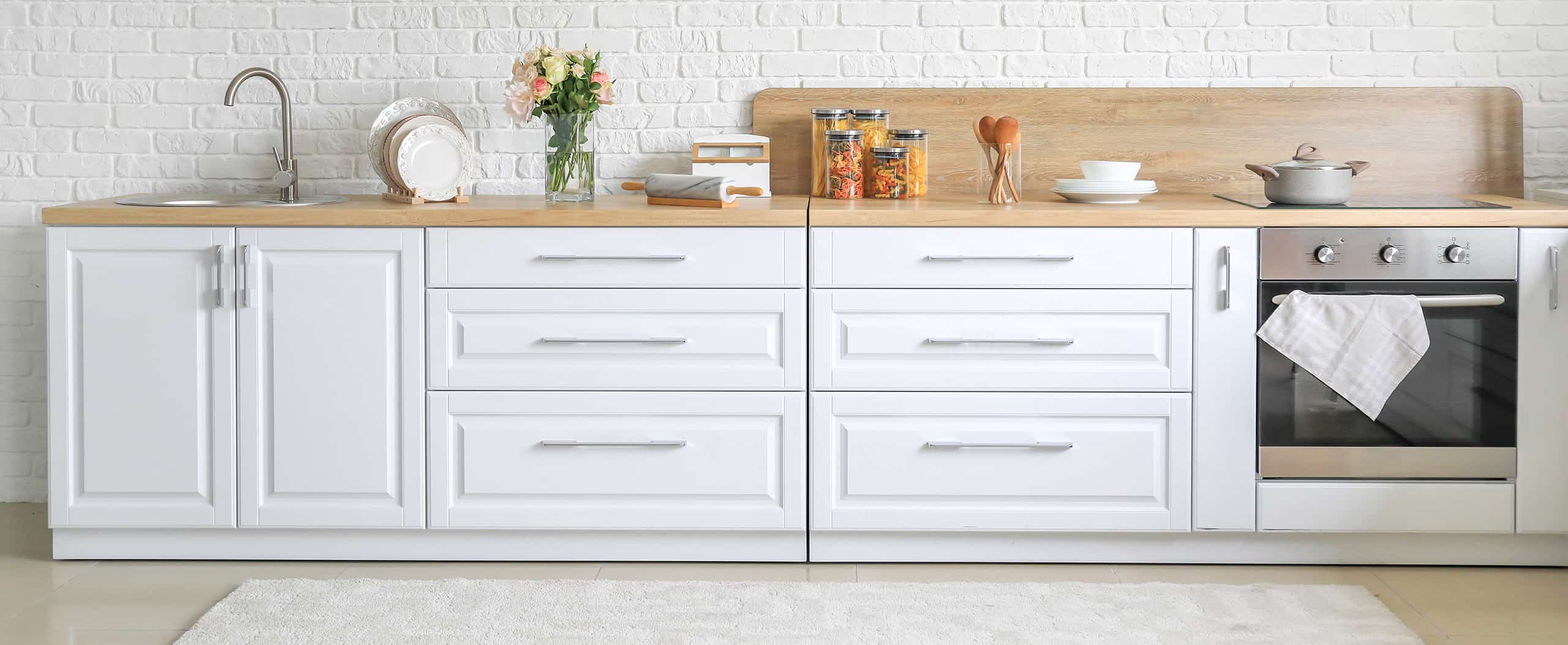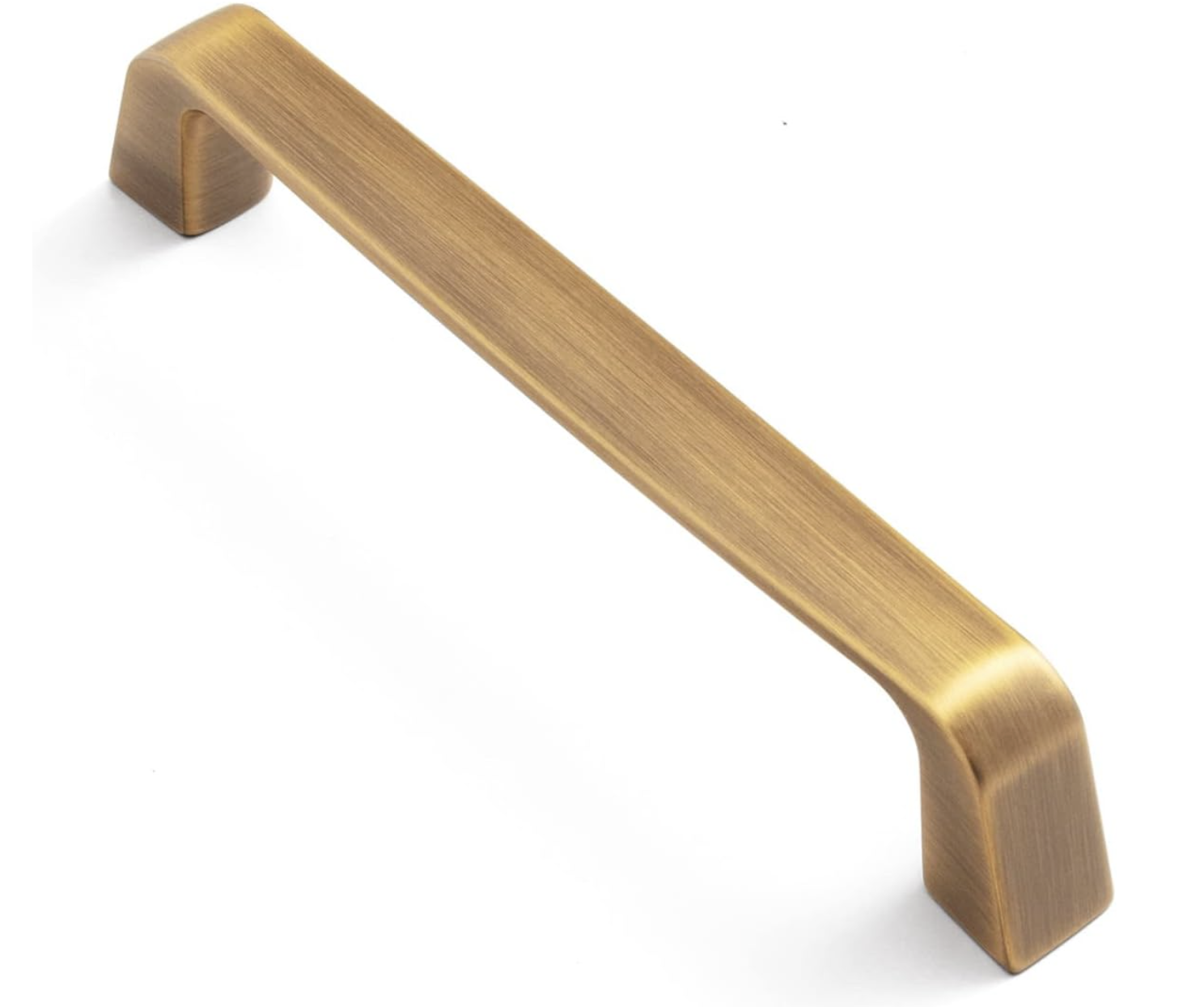Durability and Maintenance of White Cabinet Finishes
:max_bytes(150000):strip_icc()/Gd9Hpuyb-cbe751972a734ca2b771f8287188fae0.jpeg)
The selection of a cabinet finish significantly impacts both the aesthetic appeal and the longevity of kitchen cabinetry. White cabinets, while popular for their bright and airy feel, require careful consideration of finish type to ensure both beauty and durability. The following analysis compares the performance characteristics of three common white cabinet finishes: paint, lacquer, and thermofoil, highlighting their respective strengths and weaknesses in terms of durability and maintenance.
Comparison of White Cabinet Finish Longevity
Each finish exhibits unique properties affecting its lifespan and susceptibility to wear and tear. Paint, typically a less expensive option, offers good coverage and a wide range of colors and sheens. However, it is generally less durable than lacquer and more prone to chipping and scratching, especially in high-traffic areas. Lacquer, known for its hardness and smooth finish, provides superior protection against scratches and moisture. It is often preferred in professional settings due to its longevity and resistance to wear. Thermofoil, a vinyl covering applied over a substrate, offers a smooth, consistent finish and is relatively inexpensive. However, it can be susceptible to dents and scratches, and repairs are often more difficult than those for painted or lacquered surfaces. Exposure to excessive heat or moisture can also cause warping or delamination.
Maintenance and Repair of White Cabinet Finishes
A proactive maintenance plan is crucial for extending the lifespan of any cabinet finish. Regular cleaning and prompt repair of minor damage can significantly delay the onset of more extensive deterioration. The following table summarizes appropriate cleaning and repair methods, along with estimated lifespans, for each finish type. These lifespans are estimates and can vary depending on usage, environmental factors, and the quality of the finish application.
| Finish Type | Cleaning Method | Repair Method | Lifespan (Years) |
|---|---|---|---|
| Paint | Mild soap and water, non-abrasive sponge | Spot painting, light sanding and repainting for larger areas | 10-15 |
| Lacquer | Mild soap and water, soft cloth | Professional refinishing for significant damage | 15-20+ |
| Thermofoil | Mild soap and water, soft cloth | Replacement of damaged panels, often impractical for minor damage | 10-15 |
Impact of Environmental Factors on White Cabinet Finishes
Environmental conditions significantly influence the longevity and appearance of cabinet finishes. High humidity can cause paint to blister or peel, while excessive sunlight can lead to fading and discoloration. Lacquer, while more resistant, can still be affected by prolonged exposure to UV radiation, eventually showing signs of yellowing. Thermofoil, being a vinyl product, is relatively less susceptible to moisture damage compared to paint but is vulnerable to heat, which can cause warping or bubbling.
Paint Finish and Environmental Susceptibility
Paint finishes are susceptible to moisture damage, particularly in high-humidity environments. Prolonged exposure to moisture can lead to the formation of blisters and peeling, especially in areas with poor ventilation. Similarly, direct sunlight can cause fading and discoloration over time, altering the cabinet’s original white hue. Frequent cleaning with harsh chemicals can also damage the paint’s protective layer, leaving it vulnerable to scratching and wear. For instance, a kitchen located near a constantly running dishwasher or in a humid climate may experience faster paint degradation.
Lacquer Finish and Environmental Susceptibility
Lacquer finishes, while more durable than paint, are not entirely immune to environmental factors. Prolonged exposure to direct sunlight can cause a gradual yellowing or darkening of the finish, diminishing the vibrancy of the white color. High humidity can lead to minor swelling or warping, although this is less common than with paint. However, lacquer’s superior hardness provides better protection against scratches and abrasion compared to paint, ensuring a longer-lasting finish in areas subject to frequent use.
Thermofoil Finish and Environmental Susceptibility
Thermofoil finishes are relatively resistant to moisture damage, making them a suitable option for humid environments. However, prolonged exposure to excessive heat can cause warping or bubbling of the vinyl layer. Direct sunlight, while less impactful than on paint or lacquer, can still contribute to slight discoloration or fading over many years. Thermofoil is more susceptible to physical damage, such as dents and scratches, compared to lacquer and paint. For example, a thermofoil cabinet in a kitchen with a frequently used oven might show signs of heat damage more quickly.
Aesthetic Considerations for White Cabinet Finishes

The choice of finish for white kitchen cabinets significantly impacts the overall aesthetic of the space. The interplay of light reflection, sheen level, and subtle color variations within the white spectrum creates distinct moods and styles. Understanding these nuances is crucial for achieving the desired design outcome.
Visual Differences Between Matte, Semi-Gloss, and High-Gloss White Finishes
Matte, semi-gloss, and high-gloss finishes each possess unique reflective properties that dramatically alter the perception of space and the cabinets themselves. Matte white cabinets absorb more light, creating a softer, more understated look. Their lack of shine minimizes imperfections and lends a sense of calm. Semi-gloss white cabinets offer a balance between matte and high-gloss, providing a subtle sheen that reflects light moderately. This finish often appears more contemporary and sophisticated than matte. High-gloss white cabinets, on the other hand, boast a significant reflective quality, creating a sleek, modern, and sometimes even dramatic effect. They amplify light, making the kitchen appear larger and brighter, but also highlight any imperfections on the cabinet surfaces.
Kitchen Design Scenarios Illustrating Different White Cabinet Finishes
A matte white finish in a farmhouse-style kitchen, paired with natural wood countertops and open shelving, would create a warm, inviting, and rustic atmosphere. The subtle texture of the matte finish complements the organic materials, fostering a sense of cozy simplicity. Imagine creamy white cabinets, slightly textured, against a backdrop of exposed beams and woven rugs. The overall feeling is one of relaxed elegance.
A semi-gloss white finish would be ideal for a transitional-style kitchen. The balanced sheen adds a touch of sophistication without being overly reflective. Picture sleek, semi-gloss white cabinets paired with stainless steel appliances and quartz countertops. This combination provides a clean, modern aesthetic with a touch of warmth. The subtle shine elevates the space without overpowering it, creating a balanced and sophisticated feel.
High-gloss white cabinets are a perfect choice for a contemporary or minimalist kitchen design. Their high reflectivity enhances the sense of spaciousness and modernity. Imagine pristine, high-gloss white cabinets reflecting the light from large windows, paired with minimalist black hardware and a polished concrete floor. The result is a clean, sharp, and undeniably modern aesthetic. The high gloss creates a sense of drama and luxury.
Influence of White Paint Undertones on Cabinet Appearance
Different undertones within white paint significantly impact the overall appearance of the cabinets. A warm white, with subtle hints of yellow or beige, can create a cozy and inviting atmosphere. This undertone often complements warmer wood tones and brass hardware, producing a rich and inviting space. Visualize cabinets with a creamy, almost off-white hue, subtly warmed by yellow undertones, creating a feeling of comfort and warmth.
A cool white, with hints of blue or gray, presents a more crisp and modern aesthetic. This undertone pairs well with stainless steel appliances and cooler-toned countertops, fostering a sleek and contemporary feel. Imagine cabinets with a bright, almost icy white hue, slightly cooled by blue undertones, creating a feeling of cleanliness and sophistication. The difference is striking: a warm white evokes feelings of comfort and familiarity, while a cool white feels crisp, modern, and even slightly sterile.
Cost and Application of White Cabinet Finishes: Best Hardware Finish For White Cabinets

The selection of a white cabinet finish significantly impacts both the overall budget and the final aesthetic outcome of a kitchen or bathroom renovation. Understanding the cost implications, including materials and labor, as well as the advantages and disadvantages of DIY versus professional application, is crucial for informed decision-making. This section will detail the financial considerations and practical aspects of applying various white cabinet finishes.
Best hardware finish for white cabinets – The initial cost of different white cabinet finishes varies considerably depending on factors such as material quality, complexity of the design, and the extent of surface preparation required. Labor costs will also fluctuate based on geographical location and the contractor’s experience.
Initial Costs of White Cabinet Finishes, Best hardware finish for white cabinets
The following list provides a general overview of the initial costs associated with different white cabinet finishes. These are estimates and may vary depending on factors mentioned previously. It is advisable to obtain multiple quotes from reputable suppliers and contractors for accurate pricing in your specific area.
- Laminate: This is generally the most affordable option, with materials costing between $10 and $30 per square foot. Installation costs can range from $5 to $15 per square foot, depending on the complexity of the installation.
- Thermofoil: Slightly more expensive than laminate, thermofoil typically costs between $15 and $40 per square foot for materials. Installation costs are similar to laminate, ranging from $5 to $15 per square foot.
- Melamine: Melamine is a budget-friendly option, comparable in cost to laminate, ranging from $10 to $30 per square foot for materials. Installation costs are also similar to laminate and thermofoil.
- Paint: The cost of paint itself is relatively low, perhaps $20-$50 for sufficient paint depending on cabinet size. However, the labor cost for proper preparation and application can be significant, potentially exceeding the cost of materials substantially.
- Veneer: Veneer offers a more luxurious look and feel than laminate or melamine. Material costs typically range from $30 to $80 per square foot, with installation costs mirroring those of higher-end finishes.
DIY versus Professional Application
The decision to undertake a DIY project or hire a professional significantly impacts the overall cost and the quality of the final result. The following table compares the advantages and disadvantages of each approach for different white cabinet finishes.
| Finish Type | DIY Advantages | DIY Disadvantages | Professional Advantages | Professional Disadvantages |
|---|---|---|---|---|
| Laminate | Cost savings on labor; potential for increased customization. | Requires skill and precision; potential for mistakes; time-consuming. | High-quality finish; efficient installation; warranty on workmanship. | Higher overall cost; potential scheduling delays. |
| Thermofoil | Relatively easier to install than other finishes; some cost savings. | Requires careful measurement and precision; potential for damage during installation. | Perfect finish; guarantees against defects; faster installation. | Higher cost than DIY; dependence on professional availability. |
| Melamine | Cost-effective; relatively simple installation. | Susceptible to damage; requires careful handling; less durable than other options. | Professional installation ensures a flawless finish; longer-lasting result. | Higher overall cost; reliance on professional schedules. |
| Paint | Cost savings on labor; allows for creative control over color and finish. | Requires significant skill and time; potential for uneven application or imperfections. | Professional-grade finish; efficient application; flawless results. | High labor costs; requires careful scheduling and coordination. |
| Veneer | Potential for unique designs; ability to create custom finishes. | Requires advanced woodworking skills; high potential for mistakes; very time-consuming. | Expert craftsmanship; superior quality and durability; warranty on installation. | Significantly higher cost than DIY; difficulty finding skilled professionals. |
